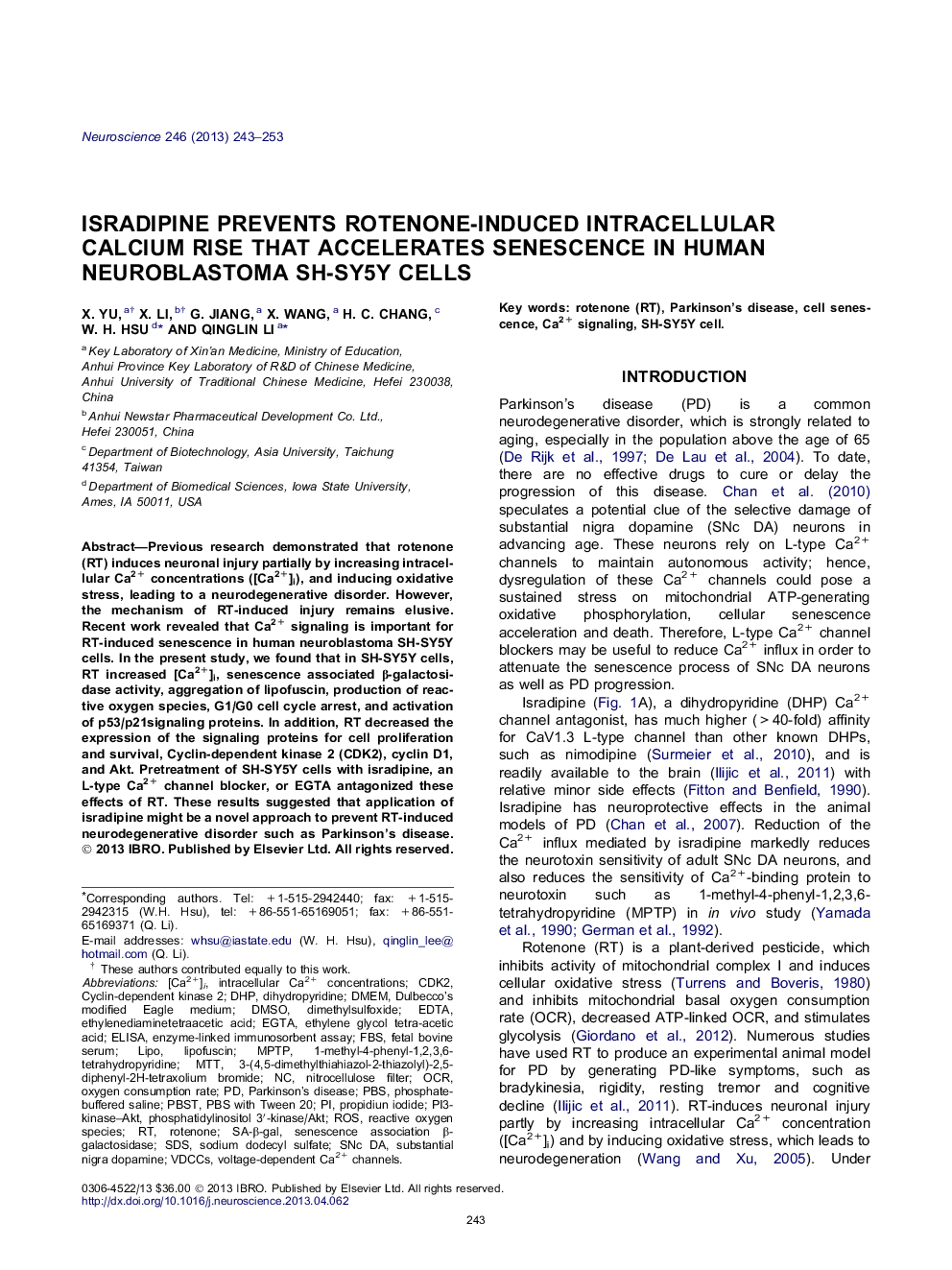| Article ID | Journal | Published Year | Pages | File Type |
|---|---|---|---|---|
| 6274619 | Neuroscience | 2013 | 11 Pages |
Abstract
Previous research demonstrated that rotenone (RT) induces neuronal injury partially by increasing intracellular Ca2+ concentrations ([Ca2+]i), and inducing oxidative stress, leading to a neurodegenerative disorder. However, the mechanism of RT-induced injury remains elusive. Recent work revealed that Ca2+ signaling is important for RT-induced senescence in human neuroblastoma SH-SY5Y cells. In the present study, we found that in SH-SY5Y cells, RT increased [Ca2+]i, senescence associated β-galactosidase activity, aggregation of lipofuscin, production of reactive oxygen species, G1/G0 cell cycle arrest, and activation of p53/p21signaling proteins. In addition, RT decreased the expression of the signaling proteins for cell proliferation and survival, Cyclin-dependent kinase 2 (CDK2), cyclin D1, and Akt. Pretreatment of SH-SY5Y cells with isradipine, an L-type Ca2+ channel blocker, or EGTA antagonized these effects of RT. These results suggested that application of isradipine might be a novel approach to prevent RT-induced neurodegenerative disorder such as Parkinson's disease.
Keywords
PBSTPBS with Tween 20VDCCsintracellular Ca2+ concentrationsDHPOCRCDK2SA-β-galMPTPEGTAPBSDMEMSDSFBSDMSODulbecco’s modified Eagle mediumMTTROS[Ca2+]iEDTAethylene glycol tetra-acetic acidEthylenediaminetetraacetic acidParkinson’s diseaseELISAEnzyme-linked immunosorbent assayDihydropyridineDimethylsulfoxideRotenonesodium dodecyl sulfatefetal bovine serumSH-SY5Y cellcyclin-dependent kinase 2Ca2+ signalingLipoLipofuscinPhosphate-buffered salineOxygen consumption rateCell senescenceVoltage-dependent Ca2+ channelsReactive oxygen species
Related Topics
Life Sciences
Neuroscience
Neuroscience (General)
Authors
X. Yu, X. Li, G. Jiang, X. Wang, H.C. Chang, W.H. Hsu, Qinglin Li,
